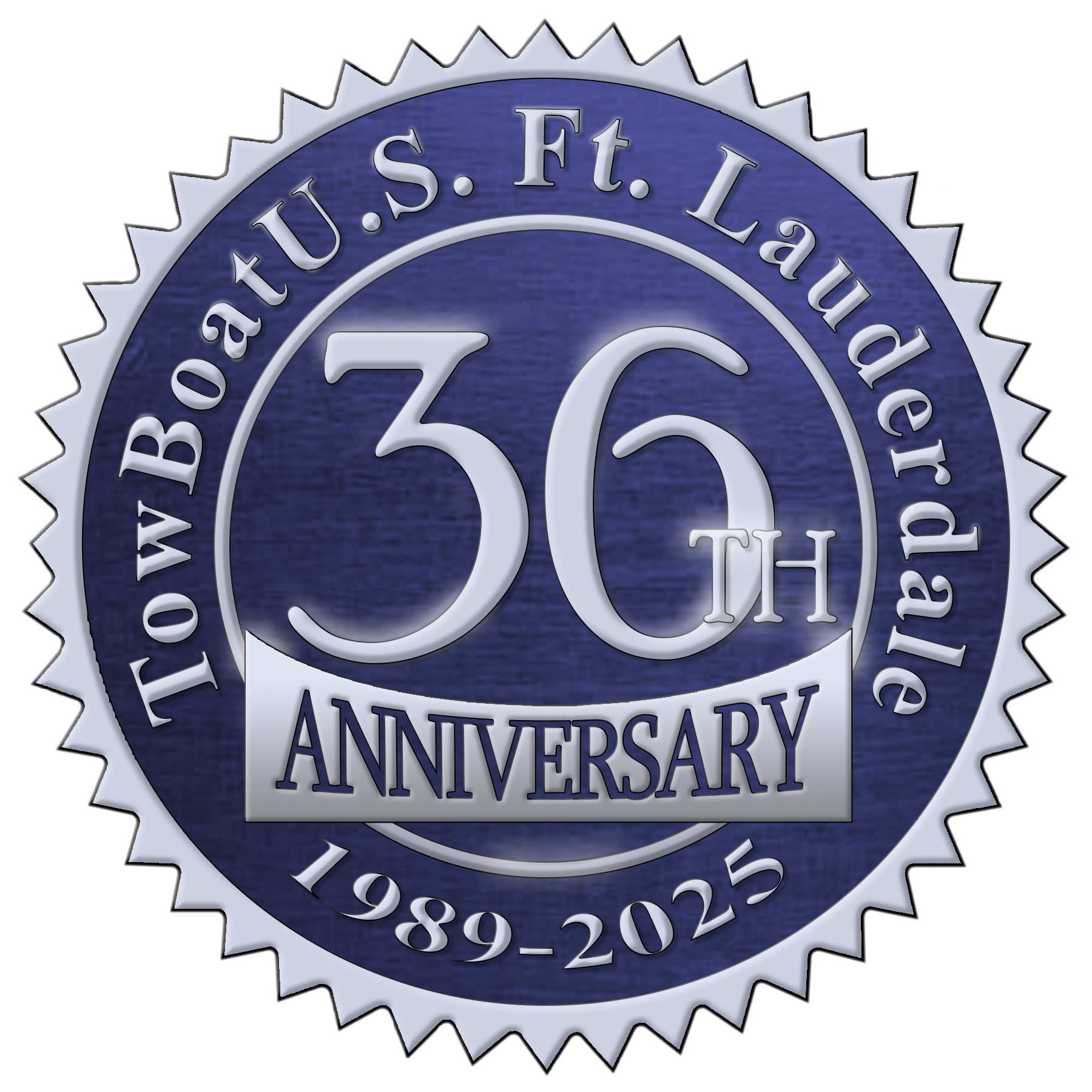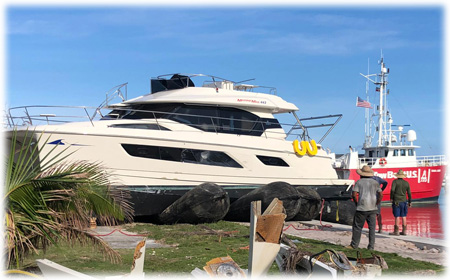![]()
Roller Bag Salvage
Hurricane Dorian was a storm like few others in history. The storm stalled over the islands for an extended period and the resulting surge was devastating. One of the notable anomalies that resulted from this surge was that many vessels were left ashore once the sea water level receded. Sometimes they landed a great distance from the slip that was so carefully chosen and prepared by the owner. Conversely, storms with strong winds and less surge tend to net salvage cases where the boats are battered against pilings or other structures until holes are created, causing them to flood and eventually sink in or near their home slips. When boats are unnaturally perched on a seawall, in a backyard or in a field, salvage methods must be adjusted while keeping a keen eye on preserving each vessel’s value and not causing any additional damage as a result of the salvage operation.
Many times in cases like these, the salvor turns to the use of a crane to return the boat to the water after necessary patching is accomplished. When the distance back to the water is great, this method requires a series of leapfrog maneuvers in which the boat is lifted, swung by the crane, and blocked. The crane then repositions and the same procedure is repeated as many times as necessary until the boat finally reaches the water. Depending on the vessel’s size, configuration and weight, the use of a crane may not be the best solution. Lifting straps and repeated blocking on less than perfect surfaces can result in more risk of damage to the casualty than the salvor is willing to accept. In these cases, the use of roller bags might be a great alternative.
TowBoatU.S. Ft. Lauderdale was faced with this exact scenario with several salvage operations that the company was awarded throughout the Abacos. Roller bags were utilized on jobs in Marsh Harbour, Scotland Cay and on Great Guana Cay. The vessels were all on land with minimal hull damage and they ranged from mid-sized power catamarans to large yachts. The roller bags used were about 40’ in length and 4’ in diameter. The process is as follows: Bags are positioned under the casualty and inflated. Once the vessel is perched on the bags, an all-terrain forklift or other such machinery is used to push or pull the casualty to its destination. Bags are repositioned ahead of the casualty as progress is made. This video below illustrates work performed in Marsh Harbour to return several of the boats to the water. In each of the cases where this method was used, there was no additional damage to the vessel as a result of the salvage operation. The boats were all towed back to the U.S. where repairs are being performed. The salvage crew took great pride in finding and executing the right solution and the customer was completely satisfied with the ultimate result.











